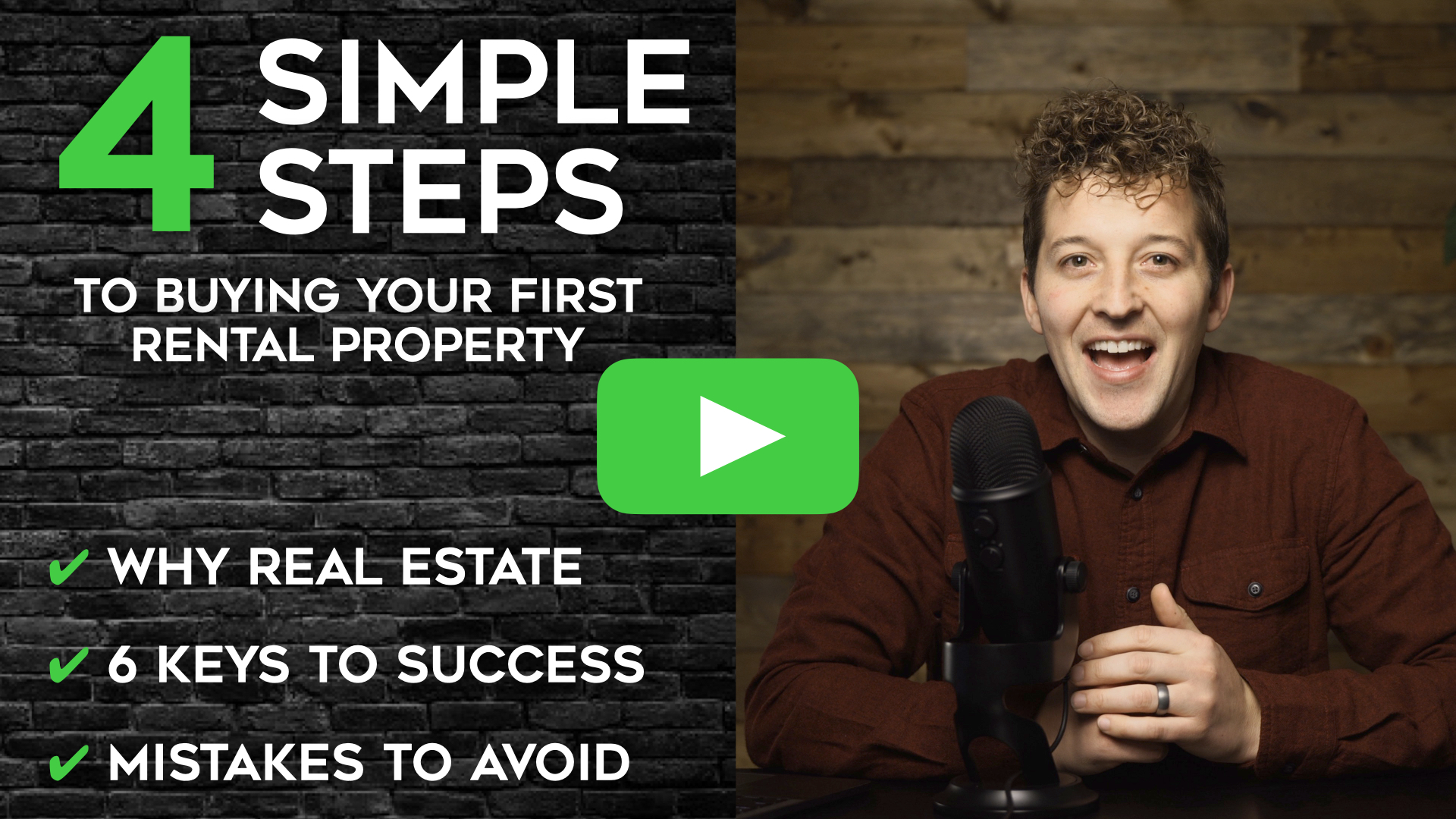Our last post was on some typical strategies for new real estate investors. In this post we want to dive into some more creative ways for aspiring real estate investors to get started. We’ll mostly focus on owner occupied strategies because those tend to be easier for new investors to get into (aka they require less cash upfront).
Paper trail
The paper trail is a super simple strategy to build up your rental portfolio over time with small down payments, low risk, and no sacrifice of comfort. For the paper trail strategy, you just move from one affordable house to the next, keeping each previous house as a rental. Everywhere you’ve lived, you have a paper trail of rental income that follows you forever.
For this strategy to work well, you’ll need to carefully select the houses you choose to buy and live in. You’ll need to buy affordable houses that will be easy to rent. Moving from mansion to mansion would eat up way too much capital and large houses are much harder to rent than entry level 2 or 3 bedroom houses.
This strategy combines nicely with house hacking (discussed in our last post). Once you move out of your house hack, keep it as a rental and let it become a part of your paper trail.
The paper trail strategy is a great option for you if you already live in an affordable starter home that would be easy and profitable to rent. Save up enough money for your next down payment and let the cash flow begin.
Trade up
Owning a single family rental is awesome. But do you know what’s even better? Owning a multi-family rental. As you build up your paper trail of rental properties, your properties will appreciate year after year after year. Eventually you’ll have a bunch of equity built up from a combination of the home value going up and the loan being paid down by your tenants rent. Eventually you’ll get to the point where you have enough equity to fund the downpayment for a bigger and better property.
Sure, we could always keep the house and try to access the equity with a cash-out refinance or a home equity line of credit, and sometimes that is the better option. But it’s hard to find lenders that will give you more than 85% of your home’s total value. That means you still have 15% of your home value stuck there.
Sometimes selling your smaller property is the faster, easier, and cheaper way to scale your business and increase your cash flow.
A single family home might be cash flowing $1,000 a month, but if you sell the home, your equity could provide the funds for the downpayment on a 4-plex that will cash flow $2,000 a month with no extra cash out of your pocket. And then down the road you might sell your 4-plex to buy a 12-unit apartment complex that cash flows $5,000 a month, again, with no extra cash out of pocket. You just trade up.
The Trade up is the grand finale to the owner-occupied trio. A house hack will reduce your living costs so you can save money faster and give you experience as a landlord. You’ll use your additional savings to move onto your next property, maybe even another house hack, keeping your first as a paper trail, and when the time is right, you’ll trade up your house hack for a bigger, better, and more profitable investment. These strategies don’t have to be used together, but they compliment each other perfectly.
Live in flip
We don’t teach or recommend “fix and flips”. They’re risky, they’re a lot of work, and they result in a one-time pay out. What we do teach and recommend are live in flips.
For this strategy you buy property that needs repairs, move in and use it as your personal residence. You do the repairs while you live there adding value in the same way you would with a fix in flip, but with way less risk. The property will be doubling as your personal residence, so it reduces the impact if the repairs take longer than anticipated or if they go over budget.
You don’t have to worry about expensive hard money loans that need to get paid back. You don’t need to stress about the after repair value, because in the worst case scenario, you just live there longer and sell it down the road when it’s appreciated a little more. You can also combine the live-in flip strategy with the paper trail strategy by keeping your newly renovated house as a rental when you’re ready to move on (this is actually what we recommend doing). Then later combine it with the trade up strategy by cashing out your equity and using it to fund a bigger and better property.
Turnkey providers
For a more hand’s off approach, a turnkey provider might be your best solution. A turnkey provider is a group or company that makes private real estate investing as easy as investing in stocks or mutual funds.
They find the property, analyze the property, and present it to you. If you like it, you’ll purchase the property and fund any repairs that are needed, but the turnkey provider will coordinate all the repairs for you so you don’t have to worry about it. Then they come with built-in property management so after you provide the initial funding, you get a check each month for your cash flow!
Turnkey providers typically operate in markets that have high rent to purchase price ratios. This is almost always throughout the midwest where house prices are much cheaper, meaning it usually takes less upfront capital to start investing.
Using a turnkey provider does have its downsides. First, the providers aren’t doing this for free. They’ll usually charge extra fees at closing, they’ll probably overcharge for any renovations or repairs that are needed, and then they charge you every month to manage the property (or they get a kickback from the company that does charge you every month), plus overcharge you every time repairs are needed.
Turnkey providers make it easy, but if you bought and self-managed that same property all by yourself, you’d get WAY more cash flow from the property. Every extra dollar you charge in rent goes straight into your pocket as extra cash flow, but it works the other way too. Every extra dollar you have in expenses comes straight OUT of your pocket.
The second downside is that you miss out on the control pillar. You turn everything over to the property management company. Hopefully they do a good job for you, but they handle everything and there’s not much you can do to change how they operate.
Third, you can’t use any owner occupied strategies. Owner occupied strategies offer the smallest down payment options that allow the most leverage. Leverage amplifies your return in appreciation and that’s where the most money (especially long-term wealth) is made in real estate investing. With a turnkey provider you have to settle for less amplification.
And fourth, these high-cash flow markets in the midwest are typically below average in appreciation. Appreciation can and should be the largest money maker. It’s not as exciting as cash flow because it doesn’t really help you until years down the road when you pull the equity out to scale your rental business, but it is the biggest. A slow growth market combined with less leverage really puts a damper on the impact appreciation can have on your finances.
Bottom line, turnkey providers are convenient, but the convenience comes at a cost because you will always be leaving potential earnings on the table.
So when would a turnkey provider be a good option?
If your local market is crazy expensive and even owner occupied financing will take a ton of capital, turnkey providers might have lower entry points.
If you’re not willing to move, investment loans in your local market are out of your budget, and you’re too nervous to self-manage remotely, a turnkey provider could provide a cheaper, worry free way to get started.
If you’re crazy busy with your career and don’t have the time to learn the ropes, a turnkey provider might be the simplest way to invest in real estate.
Your real estate coaches,
Dallas & Greg





